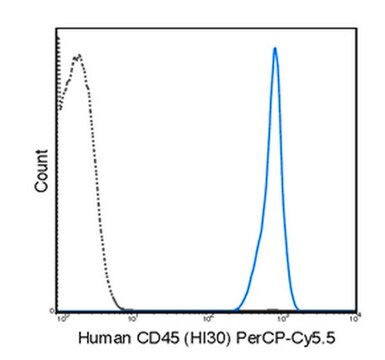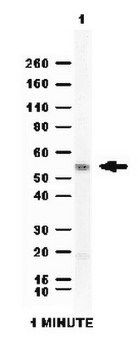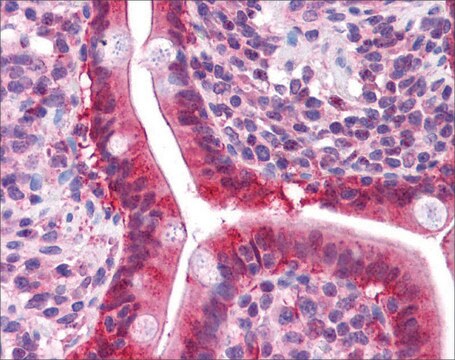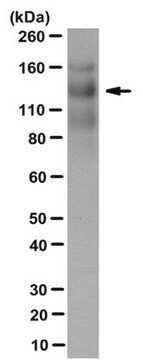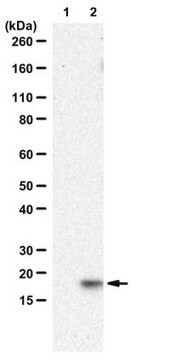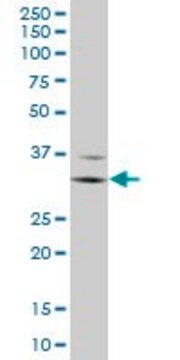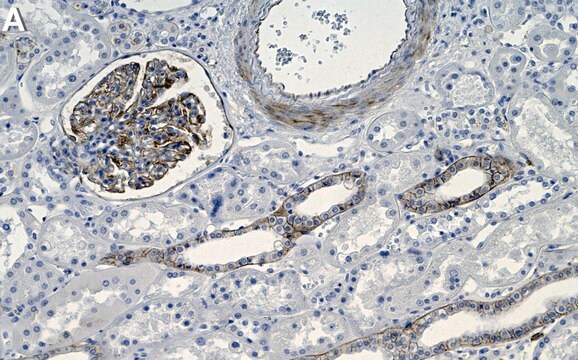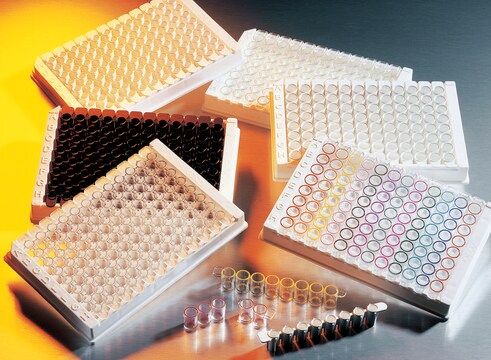ABS1653
Anti-GSTT1 Antibody
serum, from rabbit
Synonym(e):
Glutathione S-transferase theta-1, Glutathione S-transferase T1-1, GST class-theta-1, GST T1-1
About This Item
Empfohlene Produkte
Biologische Quelle
rabbit
Qualitätsniveau
Antikörperform
serum
Antikörper-Produkttyp
primary antibodies
Klon
polyclonal
Speziesreaktivität
rat, human, mouse
Methode(n)
immunohistochemistry: suitable (paraffin)
western blot: suitable
NCBI-Hinterlegungsnummer
UniProt-Hinterlegungsnummer
Versandbedingung
dry ice
Posttranslationale Modifikation Target
unmodified
Angaben zum Gen
human ... GSTT1(2952)
Allgemeine Beschreibung
Spezifität
Immunogen
Anwendung
Zelluläre Signaltransduktion
Oxidativer Stress
Western Blotting Analysis: A representative lot detected significantly upregulated GSTT1 levels in liver cytosolic preparations from rats on a selenium-deficient diet (McLeod, R., et al. (1997). Cancer Res. 57(19):4257-4266).
Western Blotting Analysis: A representative lot detected recombinant human GSTT1, as well as endogenous human GSTT1 in multiple tissue samples from four deseased individuals (Sherratt, P.J., et al. (1997). Biochem. J. 326 (Pt 3):837-846).
Immunohistochemistry Analysis: A representative lot detected differential GSTT1 immunoreactivity among liver cells in formalin-fixed, paraffin-embedded human and mouse liver tissue sections (Sherratt, P.J., et al. (2002). Toxicol. Appl. Pharmacol. 179(2):89-97).
Qualität
Western Blotting Analysis: A 1:5,000 dilution of this antibody detected glutathione S-transferase theta-1 (GSTT1) in 10 µg of human liver tissue lysate.
Zielbeschreibung
Physikalische Form
Lagerung und Haltbarkeit
Handling Recommendations: Upon receipt and prior to removing the cap, centrifuge the vial and gently mix the solution. Aliquot into microcentrifuge tubes and store at -20°C. Avoid repeated freeze/thaw cycles, which may damage IgG and affect product performance.
Sonstige Hinweise
Haftungsausschluss
Sie haben nicht das passende Produkt gefunden?
Probieren Sie unser Produkt-Auswahlhilfe. aus.
Lagerklassenschlüssel
12 - Non Combustible Liquids
WGK
WGK 1
Flammpunkt (°F)
Not applicable
Flammpunkt (°C)
Not applicable
Analysenzertifikate (COA)
Suchen Sie nach Analysenzertifikate (COA), indem Sie die Lot-/Chargennummer des Produkts eingeben. Lot- und Chargennummern sind auf dem Produktetikett hinter den Wörtern ‘Lot’ oder ‘Batch’ (Lot oder Charge) zu finden.
Besitzen Sie dieses Produkt bereits?
In der Dokumentenbibliothek finden Sie die Dokumentation zu den Produkten, die Sie kürzlich erworben haben.
Unser Team von Wissenschaftlern verfügt über Erfahrung in allen Forschungsbereichen einschließlich Life Science, Materialwissenschaften, chemischer Synthese, Chromatographie, Analytik und vielen mehr..
Setzen Sie sich mit dem technischen Dienst in Verbindung.